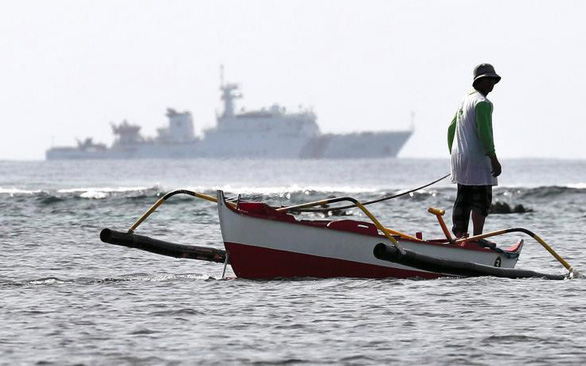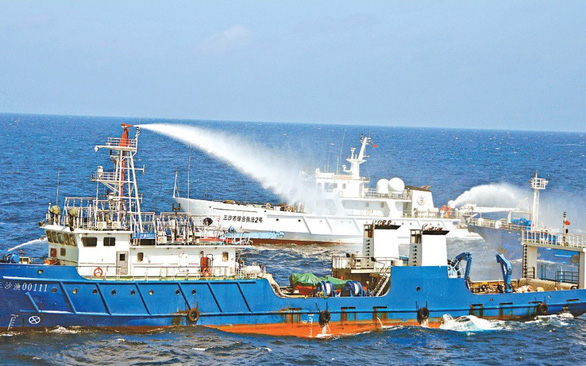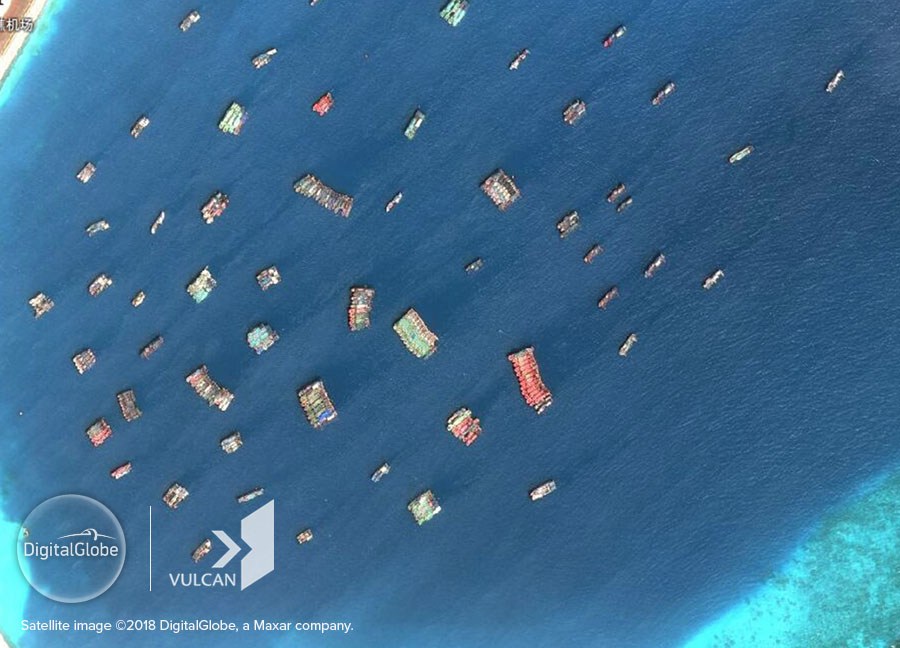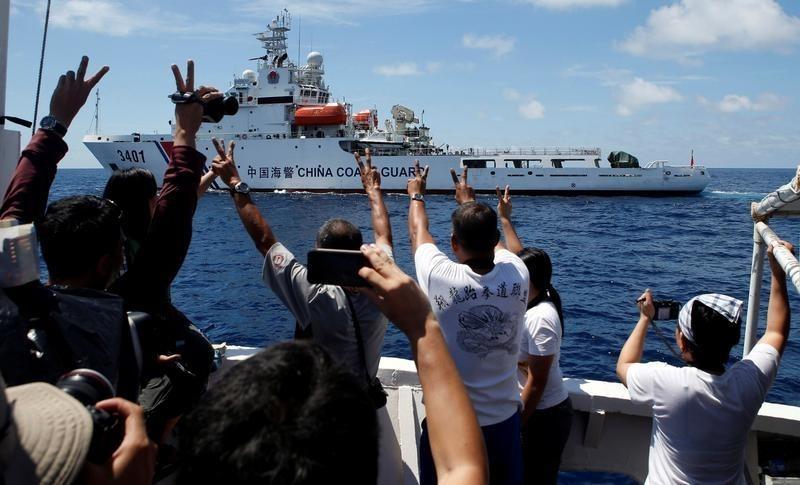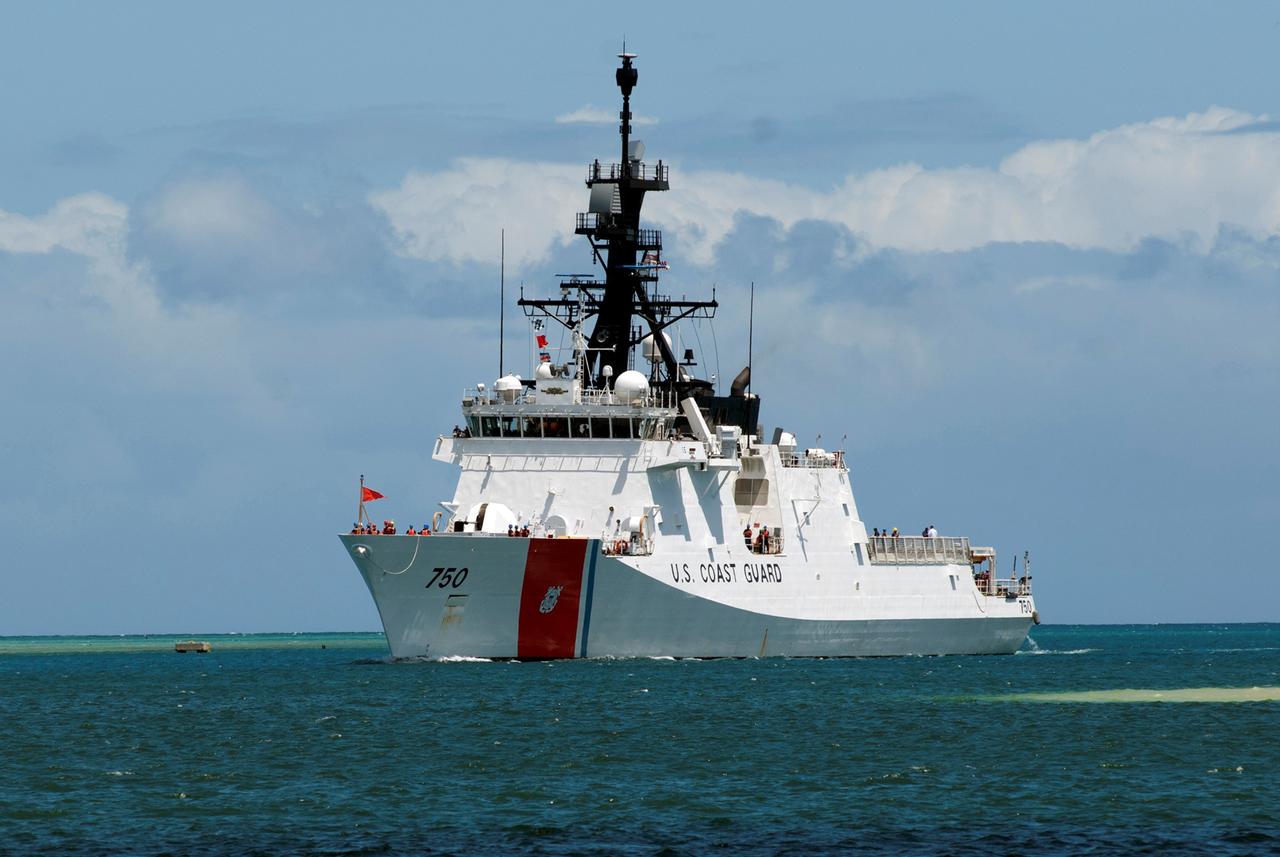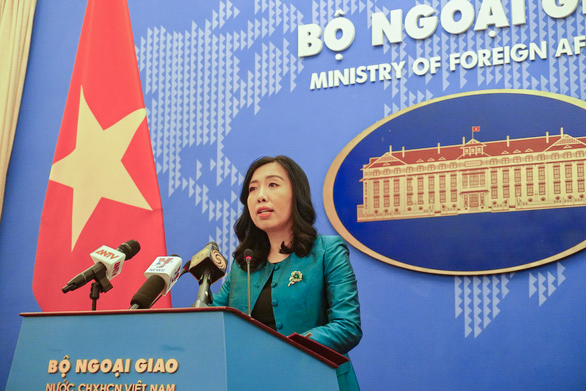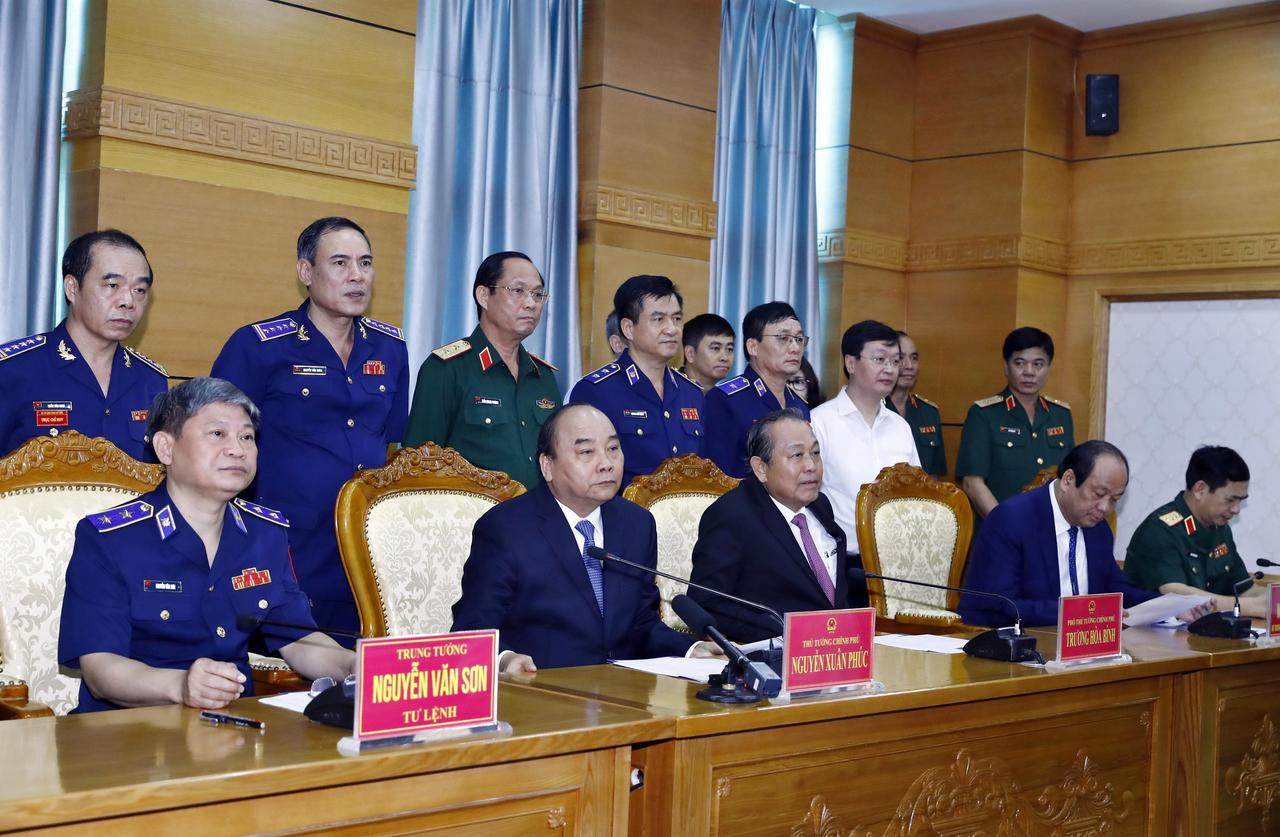Initiating confrontations, creating and escalating tension, yet never allowing the situation to get out of control or develop into serious conflict are the ways China has been behaving in the East Vietnam Sea toward its regional neighbors, including Vietnam.
“A country often employs the ‘gray zone’ strategy to gain a certain advantage, usually in territorial claims, without the use of direct force on a large scale,” said Nguyen The Phuong, a researcher at the Center for International Studies (SCIS) of the Vietnam National University-Ho Chi Minh City.
“This strategy has two fundamental characteristics: prevention of conflict from crossing a threshold that could trigger a hot war and gradual advancement,” Phuong said.
“Sovereignty is a long-term issue.
"For China, the longer they wait, the more there is to gain.
China’s hidden ‘navy’
China has repeatedly tested and made adjustments to its ‘gray zone’ strategy through stand-offs with other nations’ law enforcement forces, most notably in the East Vietnam Sea, since 2006.
These harassments are aimed at altering the status quo, turning undisputed waters into disputed waters, and complicating responses from other parties.
China’s 'maritime militia' is not a secret.
In 2013, Chinese President Xi Jinping visited fishermen in the Tanmen township of Hainan, China’s southernmost province, where he praised the local 'maritime militia' model, asking for nationwide replication, according to Chinese state media reports.
The Chinese maritime militia that is illegally headquartered on Phu Lam (Woody) Island in Vietnam’s Hoang Sa (Paracel) archipelago serves as the model for Beijing’s ambitions to build a nationwide professional militia force, according to Prof. Ryan D. Martinson from the U.S. Naval War College’s China Maritime Studies Institute.
“It is outfitted with several dozen large new ships that resemble fishing trawlers but are actually purpose-built for 'gray zone' operations,” Martinson said in a March 2019 interview published on The Maritime Executive.
|
|
| China's maritime militia fishing vessels Qiongsanshayu 00111 and Qiongsanshayu 00310 participate in a firefighting and rescue exercise in waters off Phu Lam (Woody) Island in Vietnam's Hoang Sa (Paracel) archipelago on July 14, 2016 in this photo by a Chinese maritime safety administration. |
The presence of a “worrying” number of Chinese vessels near East Vietnam Sea entities illegally occupied by Beijing was highlighted in a January 2019 report by Gregory Poling, director of the Asia Maritime Transparency Initiative (AMTI) by the Center for Strategic and International Studies (CSIS).
Poling had spent six months analyzing remote sensing data and found that the largest number of vessels operating in Vietnam’s Truong Sa (Spratly) archipelago belonged to the Chinese fishing fleet, which frequently numbers between 200 and 300 boats at the Xu Bi (Subi) and Vanh Khan (Mischief) Reefs alone.
These boats average more than 450 metric tons, well over the size legally required for boats undertaking international voyages to use Automatic Identification System (AIS) transceivers, which broadcast identifying information, headings, and other data about oceangoing vessels.
However, fewer than five percent of them actually broadcast AIS signals at any given time, Poling wrote for Foreign Policy in an article published on June 25.
“This suggests a fleet intent on hiding its numbers and actions,” Poling wrote.
|
|
| Chinese fishing vessels are seen at Xu Bi (Subi) Reef in Vietnam's Truong Sa (Spratly) archipelago on August 12, 2018 in this satellite photo provided by DigitalGlobe, Inc. and Vulcan Technologies LLC to the Asia Maritime Transparency Initiative (AMTI). |
China has shrugged off its provocations in the East Vietnam Sea as maritime incidents between fishing vessels, all while keeping its maritime militia hidden behind a civilian facade to continue harassing foreign vessels operating inside the illegal 'nine-dash line' that Beijing claims gives it economic rights over more than 80 percent of the waterway.
Nguyen The Phuong said he expects to see China persists with its 'gray zone' operations in the future due to four primary reasons.
First, Beijing has time to spare and can gradually advance its sovereignty claims for the next 50 years or more.
Second, China has the resources to optimally implement elements of “gray zone” operations.
Third, member states of the Association of Southeast Asian Nations (ASEAN), which includes Vietnam and the Philippines, remain polarized on East Vietnam Sea issues.
Lastly, major world powers such as China are playing by their own rules by ignoring international laws, especially maritime laws such as the 1982 United Nations Convention on the Law of the Sea (UNCLOS).
|
|
| A Chinese Coast Guard vessel maneuvers to block a Philippine government supply ship with members of the media aboard at the Second Thomas Shoal, part of Vietnam's Truong Sa (Spratly) Islands, in the East Vietnam Sea on March 29, 2014. Photo: Reuters |
U.S. supports 'rule-based' behaviors
In a teleconference organized by the U.S. Department of State’s Asia Pacific Media Hub on Tuesday, Commandant of the U.S. Coast Guard Adm. Karl Schultz said he looked forward to working with the United States’ Pacific partners to ensure a “free and open Indo-Pacific where individual sovereignty is protected."
“We are absolutely in support of free and open sea lines of communication in international waters,” Schultz said in response to a question posed by Tuoi Tre (Youth) newspaper regarding the U.S. strategy to counter China in the East Vietnam Sea.
“We’re open to resolving disputed territorial claims in the appropriate international court venues.”
The Coast Guard’s active participation in the region is important to signal to regional actors that the U.S. is “serious” and “committed” to “free and open, rule-based values and behaviors in the Indo-Pacific,” the admiral told Tuoi Tre.
|
|
| The U.S. Coast Guard Legend-class maritime security cutter USCGC Bertholf (WMSL 750) pulls into Joint Base Pearl Harbor-Hickam, Hawaii, U.S. to support the Rim of the Pacific (RIMPAC) 2012 exercise in this June 29, 2012 handout photo. Photo: Reuters |
Schultz said the Indo-Pacific region, including the East Vietnam Sea, is “critically important” to U.S. and international interests.
He added that the U.S. Coast Guard has recently deployed vessels to support regional operations at the request of the U.S. Indo-Pacific Command.
Responding to questions from the Philippines’ ABS-CBN Broadcasting concerning Beijing’s “physical assertion of its presence” in the East Vietnam Sea, Schultz said there needs to be “international push-back” to China’s actions.
“[We must] say, you know, we reject the types of behaviors, the antagonistic, aggressive behaviors that are not consistent with the rule-based order,” Schultz said.
The admiral added the U.S. is collaborating and working diligently with nations in the region including Vietnam, the Philippines, Malaysia. and Indonesia.
The U.S. has transferred some former high-endurance cutters, the 378-foot Hamilton-class cutters, to the Philippines and Vietnam.
“Those are capabilities that the host nations should be able to develop and use to protect their own sovereign interests in the region,” he said.
Vietnam 'resolvedly' safeguards sovereignty
|
|
| Vietnamese Foreign Ministry Spokesperson Le Thi Thu Hang. Photo: Nhat Dang / Tuoi Tre |
The Chinese survey ship Haiyang Dizhi 8 and its escorts have, since July 3, blatantly disrupted and interfered with Vietnam’s economic activities through illegal moves in the waters inside Vietnam’s Exclusive Economic Zone (EEZ) and Continental Shelf near the Tu Chinh – Vung May (Vanguard Bank – Rifleman Bank) region.
Vietnam “staunchly demanded China cease all unlawful activities, withdraw its ships from Vietnamese waters, and respect Vietnam’s sovereign rights and jurisdiction over its waters,” Vietnamese foreign ministry’s spokesperson Le Thi Thu Hang said in a statement on July 19.
Hang said again at a press conference on Thursday that Vietnam “resolvedly and consistently safeguards its sovereignty, sovereign rights and jurisdiction in the East [Vietnam] Sea as defined in the 1982 United Nations Convention on the Law of the Sea [UNCLOS] through peaceful means based on international law."
Both Vietnam and China are members of the 1982 UNCLOS, which defines the rights and responsibilities of nations with respect to their use of the world's oceans.
|
|
| Vietnam's Prime Minister Nguyen Xuan Phuc (2nd L, front) and Deputy Prime Minister Truong Hoa Binh (2nd R, front) speak with sailors of the Coast Guard force on field via a video call during their visit to the Coast Guard Command in Hanoi, Vietnam July 11, 2019. Photo: Vietnam News Agency |
Vietnam has contacted the Chinese side many times via different channels, handed over diplomatic notes to protest China’s violations, and demanded China immediately withdraw all vessels from Vietnam’s EEZ, Hang told reporters in Hanoi.
Vietnamese armed forces have carried out proper measures, she said, adding that maintaining peace and stability as well as ensuring freedom of aviation and navigation, obeying the law and respecting sovereignty, sovereign rights and jurisdiction of nations as stipulated in the 1982 UNCLOS are the common interests and responsibilities of countries and the international community.
“Vietnam welcomes and stands ready to join efforts with countries and the international community to realize the above-said target for peace, stability, cooperation and development of all nations in the region and the world,” the spokesperson stressed.Like us on Facebook or follow us on Twitter to get the latest news about Vietnam!



